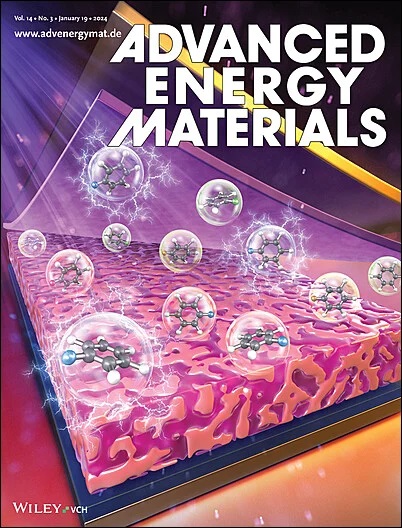Streamlining Ni-Rich LiNixMnyCozO2 Cathode Black Mass Purification for Direct Recycling and Upcycling through the Alkoxythermal Process
IF 24.4
1区 材料科学
Q1 CHEMISTRY, PHYSICAL
引用次数: 0
Abstract
The rapid accumulation of end-of-life lithium-ion batteries necessitates sustainable recycling pathways, particularly for the industry-prominent nickel-rich NCM (LiNixMnyCozO2, x+y+z = 1, x>0.8) materials. Direct recycling presents a promising solution but is hindered by the susceptibility of these materials to impurities, moisture, particle cracking, and thermal degradation, especially in hydrothermal relithiation methods. This study reveals that impurities lead to severe surface degradation in nickel-rich NCM cathodes, resulting in critical material transformations during high-temperature hydrothermal processes. To address these issues, the alkoxythermal (AT) process is introduced, a low temperature relithiation and purification strategy operating at 80 °C. Applied to nickel-rich scrap, low-nickel spent cathodes, and mixed-stream materials, the process achieves relithiation of the crystal alongside majority fluorine impurity removal. The AT process is also successfully demonstrated on a 100-gram batch of spent NCM (89% nickel) cathode black mass, showcasing its scalability. The resulting spent material post-AT process is upcycled to a single-crystal morphology, yielding a specific capacity of 196 mAh/g. With scalability, integration potential, and broad applicability, the AT process marks a significant advancement in direct recycling for nickel-rich chemistries, addressing key challenges in sustainable battery material recovery.

流线型富镍LiNixMnyCozO2阴极黑质量提纯的直接回收和烷氧热法升级利用
报废锂离子电池的快速积累需要可持续的回收途径,特别是对于行业突出的富镍NCM (LiNixMnyCozO2, x+y+z = 1, x>0.8)材料。直接回收是一种很有前途的解决方案,但由于这些材料对杂质、水分、颗粒开裂和热降解的敏感性,特别是在水热还原方法中,阻碍了直接回收。该研究表明,杂质导致富镍NCM阴极的严重表面降解,导致高温水热过程中临界材料转变。为了解决这些问题,介绍了烷氧热(AT)工艺,这是一种在80°C下操作的低温还原和净化策略。该工艺适用于富镍废料、低镍废阴极和混流材料,在去除大部分氟杂质的同时实现了晶体的再提纯。AT工艺还成功地在100克废NCM(89%镍)阴极黑块上进行了演示,展示了其可扩展性。由此产生的废材料在at处理后被升级为单晶形态,产生196 mAh/g的比容量。AT工艺具有可扩展性、集成潜力和广泛的适用性,标志着富镍化学物质直接回收的重大进步,解决了可持续电池材料回收的关键挑战。
本文章由计算机程序翻译,如有差异,请以英文原文为准。
求助全文
约1分钟内获得全文
求助全文
来源期刊

Advanced Energy Materials
CHEMISTRY, PHYSICAL-ENERGY & FUELS
CiteScore
41.90
自引率
4.00%
发文量
889
审稿时长
1.4 months
期刊介绍:
Established in 2011, Advanced Energy Materials is an international, interdisciplinary, English-language journal that focuses on materials used in energy harvesting, conversion, and storage. It is regarded as a top-quality journal alongside Advanced Materials, Advanced Functional Materials, and Small.
With a 2022 Impact Factor of 27.8, Advanced Energy Materials is considered a prime source for the best energy-related research. The journal covers a wide range of topics in energy-related research, including organic and inorganic photovoltaics, batteries and supercapacitors, fuel cells, hydrogen generation and storage, thermoelectrics, water splitting and photocatalysis, solar fuels and thermosolar power, magnetocalorics, and piezoelectronics.
The readership of Advanced Energy Materials includes materials scientists, chemists, physicists, and engineers in both academia and industry. The journal is indexed in various databases and collections, such as Advanced Technologies & Aerospace Database, FIZ Karlsruhe, INSPEC (IET), Science Citation Index Expanded, Technology Collection, and Web of Science, among others.
 求助内容:
求助内容: 应助结果提醒方式:
应助结果提醒方式:


